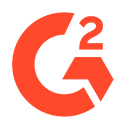Our Pricing SaaS Has Helped Customers Make $8M+ Since Launch
Hello! Who are you and what business did you start?
My name is David Peek and I started a business called Estii with my brilliant co-founder Dom De Lorenzo. Estii is an estimation and pricing platform for service providers. We help sales and delivery teams describe the scope of new opportunities, estimate against roles and products, and export highly detailed and always up-to-date commercial proposals.
In the last 12 months, we’ve helped our customers win over USD 8 million in new business while releasing a ton of useful new features. We’re now sitting at just over 50 active workspaces and $20K USD / month in revenue.

What's your backstory and how did you come up with the idea?
Dom and I worked together for 12 years at Deltatre, a global product and services business that built live and on demand video services across Web, Mobile, and TVs for content owners around the...

Download the report and join our email newsletter packed with business ideas and money-making opportunities, backed by real-life case studies.

Download the report and join our email newsletter packed with business ideas and money-making opportunities, backed by real-life case studies.

Download the report and join our email newsletter packed with business ideas and money-making opportunities, backed by real-life case studies.

Download the report and join our email newsletter packed with business ideas and money-making opportunities, backed by real-life case studies.

Download the report and join our email newsletter packed with business ideas and money-making opportunities, backed by real-life case studies.

Download the report and join our email newsletter packed with business ideas and money-making opportunities, backed by real-life case studies.

Download the report and join our email newsletter packed with business ideas and money-making opportunities, backed by real-life case studies.

Download the report and join our email newsletter packed with business ideas and money-making opportunities, backed by real-life case studies.
































